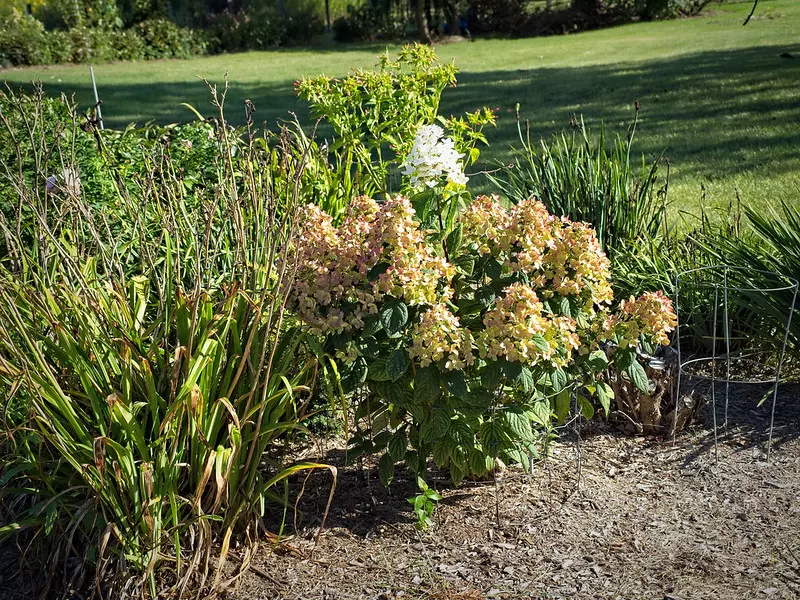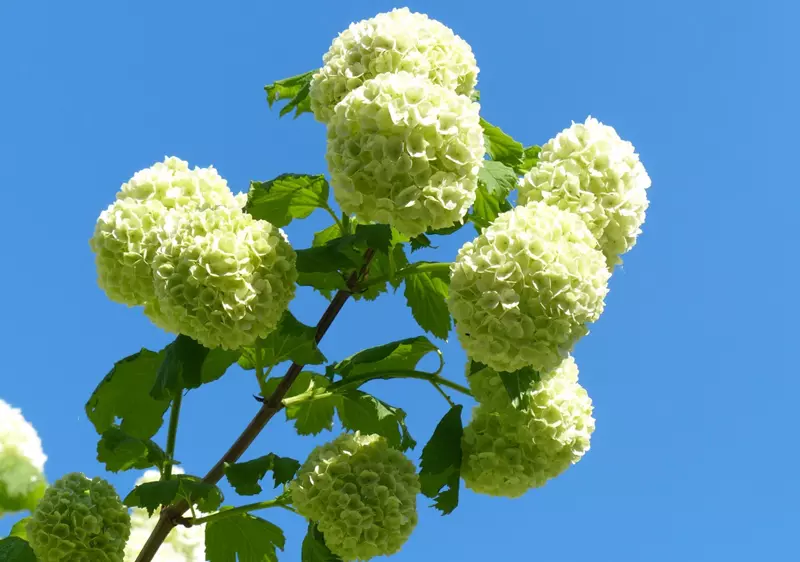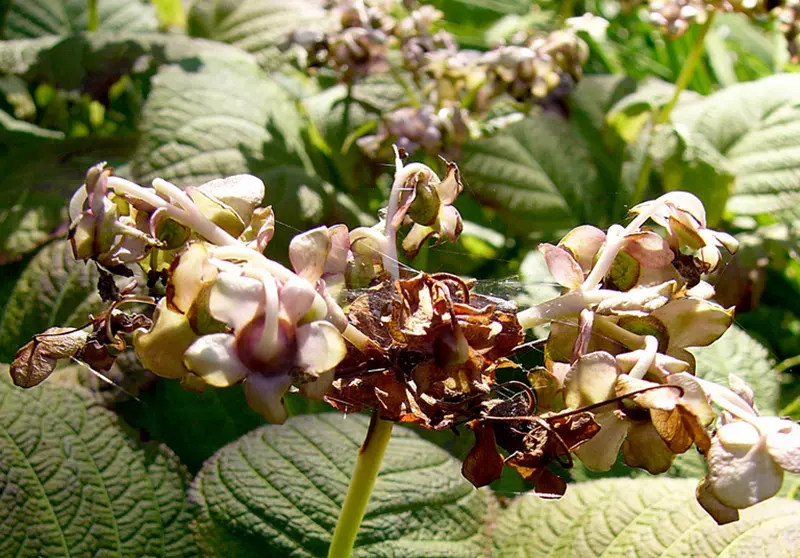Table of Contents
✅ How to Grow Hydrangeas in Tropical Humidity
- 🌿 Choose the right variety: Go for heat- and humidity-tolerant types like Hydrangea paniculata ('Limelight') or Hydrangea arborescens ('Incrediball').
- 🌤️ Find the perfect spot: Pick a location with morning sun and afternoon shade or filtered light under trees.
- 🌱 Prep your soil: Use loamy, well-draining soil enriched with compost. Aim for slightly acidic to neutral pH.
- 💦 Water wisely: Deeply water 1–2 times weekly in the early morning. Avoid overhead watering to prevent fungal issues.
- 🌀 Ensure airflow: Space plants properly and prune regularly to improve air circulation and reduce humidity-related diseases.
- ✂️ Prune correctly: Know your variety - some bloom on old wood, others on new. Time your cuts accordingly!
- 🐛 Watch for pests: Monitor for aphids, mites, and scale insects. Use neem oil or organic sprays if needed.
Hydrangeas are renowned for their striking blooms and lush foliage. However, growing them in tropical humidity presents unique challenges. This guide provides actionable tips to ensure hydrangeas flourish in such climates.
 Source: pexels.com; Author: Matej Simko; License: Pexels License
Source: pexels.com; Author: Matej Simko; License: Pexels License
Choosing Suitable Hydrangea Varieties
Hydrangeas encompass a diverse range of species, each with unique characteristics. In tropical climates, it's essential to choose varieties that can withstand high humidity and elevated temperatures. Here are some species to consider:
-
Hydrangea macrophylla (Bigleaf Hydrangea): Known for their large, mophead or lacecap flowers, these hydrangeas prefer partial shade and moist, well-drained soil. They are moderately tolerant of heat and humidity.
-
Hydrangea paniculata (Panicle Hydrangea): Featuring cone-shaped flower panicles, this species is more tolerant of sun and heat, making it suitable for warmer climates.
-
Hydrangea arborescens (Smooth Hydrangea): These hydrangeas produce large, round flower heads and can adapt to a range of soil types. They are known for their resilience and can tolerate higher temperatures.
-
Hydrangea quercifolia (Oakleaf Hydrangea): Recognisable by their oak-shaped leaves and elongated flower clusters, they prefer partial shade and are moderately tolerant of heat and humidity.
Személyes tapasztalat: A legjobb hortenzia magas páratartalomhoz
Több mint 20 éves kertészeti tapasztalattal a hátam mögött sokféle hortenziát kipróbáltam, hogy megtudjam, melyik fajta boldogul a legjobban magas páratartalmú környezetben. Bár a Hydrangea macrophylla-t gyakran ajánlják, azt tapasztaltam, hogy egyes fajták, mint például a 'Endless Summer' és a 'Blushing Bride', hajlamosak a makacs gombás fertőzésekre, még megfelelő gondozás mellett is.
Meglepő módon az Hydrangea paniculata fajták, például a 'Limelight' és a 'Little Lime', sokkal jobban alkalmazkodtak, még a legpárásabb időszakokban is. Erős virágzást tartottak fenn, és lényegesen kevésbé voltak érzékenyek a lisztharmatra, mint a Hydrangea macrophylla.
A legnagyobb sikerem azonban a Hydrangea arborescens 'Incrediball' volt. Nemcsak hogy jól viselte a magas páratartalmat, de erős szárai megakadályozták a virágok gyakori megdőlését az eső után. Ha egy igazán ellenálló hortenziát keresel párás környezetbe, mindenképp érdemes kipróbálnod ezt a fajtát a saját kertedben.
Top Hydrangea Varieties for Tropical Climates
Within these species, certain cultivars have demonstrated exceptional performance in humid, tropical conditions. Here are some noteworthy varieties:
-
'Limelight' (Hydrangea paniculata): Celebrated for its lime-green flowers that transition to pink in the autumn, 'Limelight' is heat-tolerant and thrives in full sun to partial shade.
-
'Incrediball' (Hydrangea arborescens): Known for its massive white blooms and sturdy stems, 'Incrediball' can handle the heat and is adaptable to various soil conditions.
-
'Endless Summer' (Hydrangea macrophylla): This reblooming variety offers flowers throughout the growing season and shows moderate tolerance to heat and humidity.
-
'Pee Gee' (Hydrangea paniculata 'Grandiflora'): With large, conical white flowers that age to pink, 'Pee Gee' is adaptable to various climates, including those with high humidity.
Considerations for Tropical Gardening
When selecting hydrangea varieties for tropical climates, consider the following factors:
-
Heat Tolerance: Opt for varieties known to withstand higher temperatures without wilting or experiencing stress.
-
Humidity Resistance: Choose cultivars less susceptible to fungal diseases prevalent in humid environments.
-
Soil Adaptability: Ensure the variety can thrive in the soil type of your garden, whether sandy, loamy, or clay.
-
Sun Exposure: Determine whether the hydrangea prefers full sun, partial shade, or dappled sunlight to match your garden's conditions.
Planting and Care Tips
To maximise the success of your hydrangeas in tropical climates:
-
Planting Time: Install hydrangeas during the cooler part of the day to reduce transplant shock.
-
Watering: Maintain consistent soil moisture, especially during dry spells, but avoid waterlogging.
-
Mulching: Apply a layer of mulch to retain soil moisture and regulate temperature.
-
Pruning: Prune according to the specific needs of the variety to encourage healthy growth and flowering.
By carefully selecting hydrangea varieties suited to tropical humidity and adhering to proper planting and care practices, you can enjoy a vibrant and flourishing garden filled with these enchanting blooms.
Selecting the Ideal Planting Location
Understanding Hydrangea Light Requirements
Hydrangeas generally thrive in environments that offer a balance between sunlight and shade. In tropical regions, where sunlight can be intense, it's crucial to provide conditions that protect the plants from excessive heat while ensuring they receive adequate light for photosynthesis.
-
Partial Shade: Most hydrangea varieties prefer morning sun followed by afternoon shade. This exposure allows them to benefit from gentle sunlight while being shielded from the harsh midday rays, reducing the risk of leaf scorch and wilting.
-
Filtered Light: Planting hydrangeas under the canopy of taller trees can provide dappled sunlight, mimicking their natural woodland habitat and offering protection from direct sun exposure.
Soil Considerations
The soil in which hydrangeas are planted plays a significant role in their ability to thrive, especially in humid tropical climates.
-
Well-Draining Soil: Hydrangeas require moist yet well-draining soil to prevent waterlogging, which can lead to root rot. Amending the planting area with organic matter, such as compost or well-rotted manure, can enhance soil structure and drainage.
-
Soil pH: While hydrangeas can adapt to various soil pH levels, the pH can influence flower colour in some species. For instance, acidic soils can produce blue flowers, while alkaline soils may result in pink blooms. Testing and adjusting soil pH can help achieve desired flower colours.
Air Circulation and Humidity Management
High humidity levels in tropical climates can increase the risk of fungal diseases in hydrangeas. Selecting a planting location that promotes good air circulation is essential.
-
Spacing: Ensure adequate spacing between plants to facilitate airflow, which helps in drying foliage and reducing the likelihood of fungal infections.
-
Avoiding Enclosed Areas: Refrain from planting hydrangeas in confined spaces with limited air movement, as stagnant air can exacerbate humidity-related issues.
Protection from Environmental Stressors
Tropical climates can present various environmental challenges that may affect hydrangea health.
-
Wind Protection: Strong winds can damage hydrangea branches and desiccate foliage. Planting near windbreaks, such as hedges or fences, can offer necessary protection.
-
Frost Pockets: Although rare in tropical regions, sudden temperature drops can harm hydrangeas. Avoid planting in low-lying areas where cold air may settle, creating frost pockets.
Optimal Planting Time
Timing the planting of hydrangeas is crucial to ensure their successful establishment.
-
Cooler Periods: In tropical climates, consider planting hydrangeas during cooler parts of the year or during periods of reduced heat to minimise transplant shock and water stress.
-
Evening Planting: If planting during warmer months, opt for late afternoon or evening to allow plants to acclimate overnight before facing daytime heat.
By carefully selecting a planting location that considers light exposure, soil conditions, air circulation, and protection from environmental stressors, gardeners in tropical humid climates can cultivate healthy and flourishing hydrangeas. Thoughtful site selection, combined with proper planting techniques, lays the foundation for these ornamental shrubs to thrive and enhance the beauty of any garden.
Soil Requirements
Soil Composition and Texture
Hydrangeas flourish in fertile, humus-rich soils that retain moisture yet drain well. The ideal soil composition includes:
-
Loamy Soil: A balanced mixture of sand, silt, and clay provides both adequate drainage and moisture retention, essential for hydrangea roots.
-
Organic Matter: Incorporating compost or well-rotted manure enriches the soil with nutrients and enhances its structure, promoting healthy root development.
Soil pH and Its Influence on Flower Colour
The pH level of the soil not only affects nutrient availability but also influences the bloom colour of certain hydrangea species, particularly Hydrangea macrophylla (Bigleaf Hydrangea):
-
Acidic Soils (pH ≤ 6): Tend to produce blue flowers due to increased aluminium availability.
-
Neutral to Alkaline Soils (pH ≥ 7): Generally result in pink blooms, as aluminium becomes less available.
Gardeners can adjust soil pH to achieve desired flower colours:
-
Lowering pH: Apply soil acidifiers like aluminium sulphate or incorporate organic materials such as pine needles and coffee grounds to increase acidity.
-
Raising pH: Use garden lime to reduce soil acidity, shifting bloom colours towards pink hues.
Drainage and Moisture Management
In tropical climates, managing soil moisture is vital due to high humidity and frequent rainfall:
-
Well-Draining Soil: Prevents waterlogging, which can lead to root rot. Amending the soil with organic matter improves drainage while retaining necessary moisture.
-
Mulching: Applying a layer of mulch around the base of the plant helps retain soil moisture, regulate temperature, and suppress weeds, contributing to a stable growing environment.
Soil Preparation and Planting Tips
Proper soil preparation sets the foundation for healthy hydrangea growth:
-
Soil Testing: Conduct a soil test to determine pH and nutrient levels, allowing for informed amendments tailored to your hydrangea's needs.
-
Amending Soil: Based on test results, incorporate necessary amendments to adjust pH and enhance fertility, ensuring an optimal environment for planting.
-
Planting Depth: Plant hydrangeas at the same depth they were in their nursery pots to prevent stress and encourage proper root establishment.
Ongoing Soil Maintenance
Maintaining soil health is an ongoing process that supports the long-term vitality of your hydrangeas:
-
Regular Mulching: Refresh mulch annually to continue benefiting soil moisture retention and temperature regulation.
-
Fertilisation: Apply a balanced, slow-release fertiliser in spring to provide essential nutrients throughout the growing season, promoting robust growth and abundant blooms.
-
Monitoring Soil pH: Periodically test soil pH, especially if bloom colour is a concern, and adjust as necessary to maintain desired levels.
By understanding and implementing these soil requirements, gardeners in tropical humid climates can create an environment where hydrangeas thrive, leading to healthy plants and spectacular floral displays.
Watering Practices
Understanding Hydrangea Water Requirements
Hydrangeas thrive in consistently moist soil; however, the high humidity and frequent rainfall characteristic of tropical climates can complicate watering routines. It's essential to balance moisture levels to prevent both drought stress and waterlogging.
-
Consistent Moisture: Maintain evenly moist soil without allowing it to become waterlogged. Hydrangeas are not drought-tolerant and require regular watering to support their large leaves and blooms.
-
Deep Watering: Water deeply at the base of the plant to encourage robust root development. This practice ensures that moisture reaches the root zone and reduces surface evaporation.
In my own garden, I learned the hard way that a quick splash of water just doesn’t cut it for hydrangeas. I used to give them a casual sprinkle in the evenings, thinking it was enough - but their leaves actualy kept wilting by midday. Once I switched to deep watering with a slow soak at the base, the difference was dramatic. The plants perked up, and I finally had those lush blooms I’d hoped for! Interestingly, the Oregon State University Extension confirms this too: they recommend deep watering using a soaker hose to ensure hydration reaches the root zone. Trust me, it’s worth the extra few minutes!
Best Time to Water
Timing your watering sessions can significantly impact the effectiveness of moisture uptake and the overall health of your hydrangeas.
-
Early Morning: Watering in the early morning allows plants to absorb moisture before the day's heat intensifies, reducing evaporation and providing hydration during peak transpiration periods.
-
Avoid Evening Watering: Watering late in the day can leave foliage damp overnight, increasing the risk of fungal diseases, especially in humid conditions.
Watering Techniques
Employing appropriate watering methods can enhance efficiency and promote plant health.
-
Soaker Hoses or Drip Irrigation: These systems deliver water directly to the soil at the base of the plant, minimizing water loss through evaporation and keeping foliage dry, which is beneficial in humid climates.
-
Avoid Overhead Sprinklers: Overhead watering can wet the foliage, increasing the likelihood of fungal infections in humid environments.
Monitoring Soil Moisture
Regularly assessing soil moisture levels helps prevent both under- and over-watering.
-
Soil Moisture Meters: Utilize a soil moisture meter to obtain accurate readings of soil hydration, ensuring optimal moisture levels are maintained.
-
Manual Checks: Insert your finger about two inches into the soil near the plant's base. If it feels dry at this depth, it's time to water.
Mulching to Retain Moisture
Applying mulch around your hydrangeas offers several benefits, particularly in tropical climates.
-
Moisture Retention: A 2-3 inch layer of organic mulch helps retain soil moisture by reducing evaporation, ensuring consistent hydration for your hydrangeas.
-
Temperature Regulation: Mulch insulates the soil, keeping it cooler during hot periods and protecting roots from temperature fluctuations.
Adjusting for Rainfall
Tropical regions often experience heavy rainfall, necessitating adjustments to your watering schedule.
-
Monitor Weather Patterns: Keep track of rainfall amounts and reduce supplemental watering accordingly to prevent overwatering.
-
Ensure Proper Drainage: In areas with excessive rainfall, ensure that the planting site has good drainage to prevent water from pooling around the roots.
Signs of Improper Watering
Being attentive to your hydrangeas' appearance can provide clues about their watering needs.
-
Wilting Leaves: Can indicate both under-watering and over-watering. Assess soil moisture to determine the cause.
-
Yellowing or Browning Edges: May suggest water stress or root issues related to improper watering practices.
Testing the Best Watering Method for Hydrangeas in High Humidity
At a friend's nursery, who has been growing hydrangeas for many years, I had the opportunity to test which watering method works best in a high-humidity environment. A huge thanks to them for their patience and help!
During the experiment, we tested three different watering strategies on the same hydrangea varieties:
- Daily shallow watering (morning)
- Deep watering twice a week (early morning)
- Deep watering once a week (morning & after sunset)
The results were quite clear. The plants that received daily shallow watering quickly showed signs of stress: leaf edges began to brown, the soil surface was often wet, but underneath the roots remained dry. In addition, in the humid weather, fungal infections became more frequent, and the plants were less resilient.
On the other hand, the twice-a-week deep watering method proved to be the most effective. The plants developed stronger root systems, showed fewer signs of water stress, and remained fresher even during the hottest hours of the day.
This aligns with the recommendations from Oregon State University Extension, which emphasises that deep but infrequent watering promotes healthy root growth and makes hydrangeas more resilient. Their research highlights that quick, shallow watering is ineffective as it only moistens the soil surface. Instead, they recommend using a soaker hose or watering bag to deliver a slow, deep soak that reaches the entire root zone.
By implementing these tailored watering practices, gardeners in tropical humid climates can support the health and vitality of their hydrangeas, leading to robust growth and stunning floral displays.
Managing Humidity Levels
High humidity levels can create a conducive environment for fungal diseases, such as powdery mildew and leaf spot, which adversely affect hydrangeas. Excess moisture on leaves and stems can also lead to rot and other health issues.
Site Selection and Plant Spacing
Choosing an appropriate planting location and ensuring adequate spacing are crucial steps in managing humidity:
-
Air Circulation: Plant hydrangeas in areas with good air movement to facilitate the drying of foliage and reduce humidity-related diseases.
-
Proper Spacing: Maintain sufficient distance between plants to prevent overcrowding, allowing air to circulate freely around each plant.
Watering Practices
Effective watering techniques can help mitigate the challenges posed by high humidity:
-
Water at the Base: Direct water to the soil at the base of the plant, avoiding overhead watering that can wet the foliage and increase humidity around the plant.
-
Morning Watering: Watering in the early morning allows foliage to dry throughout the day, reducing the risk of fungal infections.
Mulching
Applying mulch offers several benefits in humid climates:
-
Moisture Regulation: Mulch helps maintain consistent soil moisture levels, reducing the need for frequent watering.
-
Soil Temperature Control: It insulates the soil, keeping it cooler during hot periods and preventing rapid evaporation.
Pruning and Maintenance
Regular maintenance practices are vital for managing humidity:
-
Prune Regularly: Remove dead or diseased wood and thin out dense growth to improve air circulation within the plant canopy.
-
Clean Debris: Keep the area around the plants free from fallen leaves and other debris that can harbour moisture and promote fungal growth.
Fungal Disease Management
In high-humidity environments, being vigilant about fungal diseases is essential:
-
Monitor Plants: Regularly inspect hydrangeas for signs of fungal infections, such as discoloured spots on leaves or powdery residues.
-
Apply Fungicides: If necessary, use appropriate fungicides as a preventive measure or to treat early signs of disease, following the manufacturer's instructions carefully.
Soil Drainage
Ensuring proper soil drainage is crucial in humid climates:
-
Well-Draining Soil: Plant hydrangeas in soil that drains well to prevent water from accumulating around the roots, which can exacerbate humidity-related issues.
-
Avoid Waterlogging: Ensure that the planting site does not retain excessive moisture, as this can lead to root rot and other problems.
By implementing these strategies, gardeners can effectively manage humidity levels for hydrangeas in tropical climates, promoting healthy growth and abundant blooms.
Pruning Techniques
Understanding Hydrangea Growth Habits
Before pruning, it's crucial to identify whether your hydrangea blooms on old wood (previous year's growth) or new wood (current year's growth), as this determines the appropriate pruning time and method.
-
Old Wood Bloomers: Species such as Hydrangea macrophylla (Bigleaf) and Hydrangea quercifolia (Oakleaf) develop flower buds on last year's stems. Pruning should be done immediately after flowering to avoid removing next season's buds.
-
New Wood Bloomers: Species like Hydrangea paniculata (Panicle) and Hydrangea arborescens (Smooth) produce blooms on the current season's growth. Prune these in late winter or early spring before new growth begins.
Pruning Techniques for Old Wood Bloomers
For hydrangeas that bloom on old wood, follow these steps:
-
Timing: Prune immediately after the flowering period, typically in late summer. Avoid pruning in autumn or winter, as this can remove developing buds for the next season.
-
Method:
- Remove spent flowers (deadheading) by cutting just above the first set of healthy buds beneath the flower head.
- Eliminate any dead, diseased, or damaged stems to maintain plant health.
- Thin out overcrowded branches to improve air circulation, reducing the risk of fungal diseases prevalent in humid climates.
Pruning Techniques for New Wood Bloomers
For hydrangeas that bloom on new wood, adhere to the following guidelines:
-
Timing: Prune in late winter or early spring while the plant is dormant, before new growth emerges.
-
Method:
- Cut back the previous year's growth to a healthy pair of buds, typically reducing the plant's height by one-third to one-half.
- Remove any weak or spindly stems to encourage robust growth.
- Maintain a balanced shape to promote even flowering and structural integrity.
General Pruning Tips for Tropical Humidity
In humid tropical climates, additional considerations include:
-
Sanitation: Always use clean, sharp pruning tools to prevent the spread of diseases. Sterilize tools before and after use, especially when cutting diseased plant material.
-
Disposal: Dispose of pruned material away from the garden area to reduce the risk of disease transmission.
-
Monitoring: Regularly inspect plants for signs of disease or pest infestations, which can be exacerbated by high humidity, and address issues promptly.
Additional Considerations
In tropical climates, hydrangeas may experience more vigorous growth due to the warm, humid conditions. This can lead to overcrowding and increased susceptibility to diseases. Regular pruning helps manage plant size and promotes better air circulation, essential for reducing humidity-related issues.
By implementing these pruning techniques, gardeners in tropical humid climates can maintain healthy hydrangeas, encourage abundant blooms, and enhance the overall aesthetics of their gardens.
Pest and Disease Control
Common Pests Affecting Hydrangeas
Several pests are known to target hydrangeas, especially in humid conditions:
-
Aphids: Small, sap-sucking insects that cluster on new growth, causing distortion and potentially transmitting viruses. They excrete honeydew, leading to sooty mould development.
-
Spider Mites: Microscopic arachnids that feed on plant sap, leading to stippled leaves and, in severe cases, leaf drop. They thrive in hot, dry conditions but can also be problematic in humid climates.
-
Scale Insects: Including hydrangea scale (Pulvinaria hydrangeae), these pests attach to stems and leaves, sucking sap and weakening the plant. Infestations appear as white, waxy deposits on the undersides of leaves.
Common Diseases in Humid Tropical Climates
High humidity fosters an environment conducive to fungal and bacterial diseases:
-
Powdery Mildew: Characterised by white or grey powdery growth on leaves and stems, leading to distorted growth and reduced vigour.
-
Botrytis Blight (Grey Mould): Causes brown or greyish spots on flowers and leaves, leading to decay. It thrives in cool, humid conditions and can rapidly spread, especially during prolonged wet periods.
-
Leaf Spots: Fungal pathogens like Cercospora and Phyllosticta cause dark spots on leaves, which may coalesce, leading to premature leaf drop.
Integrated Pest and Disease Management Strategies
Implementing a combination of cultural, mechanical, and chemical controls can effectively manage pests and diseases:
-
Proper Spacing and Pruning: Ensure adequate spacing between plants and prune regularly to improve air circulation, reducing humidity around foliage and deterring fungal growth.
-
Watering Practices: Water at the base of the plant early in the morning to keep foliage dry, minimising conditions favourable for disease development.
-
Sanitation: Remove and dispose of infected plant debris promptly to prevent the spread of pathogens. Avoid composting diseased material, as some pathogens can survive the composting process.
-
Monitoring and Early Detection: Regularly inspect plants for signs of pests or disease. Early detection allows for prompt intervention, reducing the severity of infestations.
-
Biological Controls: Encourage natural predators like ladybirds and lacewings, which feed on aphids and other pests. Introducing beneficial insects can help maintain pest populations at manageable levels.
-
Chemical Controls: If necessary, use appropriate insecticides or fungicides, following label instructions carefully. For instance, organic sprays containing natural pyrethrum or plant oils can control scale insect nymphs.
Resistant Varieties
Selecting hydrangea varieties less susceptible to pests and diseases can reduce management efforts. For example, native species like oakleaf hydrangea (Hydrangea quercifolia) tend to be more disease-resistant.
Environmental Considerations
Maintaining plant health through proper fertilisation and ensuring well-draining soil can enhance resilience against pests and diseases. Avoid excessive nitrogen fertilisation, as it can promote lush, susceptible growth.
By adopting these integrated pest and disease management strategies, gardeners can maintain healthy hydrangeas in tropical humid climates, ensuring their gardens remain vibrant and flourishing.
Frequently Asked Questions (FAQ)
Can hydrangeas survive tropical humidity?
Yes, but it's essential to choose the right varieties such as Hydrangea paniculata and Hydrangea arborescens, which are more tolerant of heat and humidity.
What are the best hydrangea types for humid climates?
'Limelight', 'Incrediball', and 'Pee Gee' are among the top performers in tropical, humid regions thanks to their resilience and disease resistance.
How often should I water hydrangeas in high humidity?
Water deeply 1–2 times per week, preferably in the early morning. Avoid daily shallow watering, which can cause fungal issues.
How can I prevent fungal diseases on hydrangeas in humidity?
Ensure proper spacing, prune for airflow, water at the base (not overhead), and mulch to regulate moisture. Use organic fungicides if needed.
What kind of soil is best for hydrangeas in tropical areas?
Well-draining, loamy soil enriched with compost. Slightly acidic to neutral pH (6.0–7.0) is ideal. Avoid compacted or poorly draining soil.
When should I prune my hydrangeas in a humid climate?
Pruning depends on the variety: Bigleaf and Oakleaf bloom on old wood (prune after flowering), while Panicle and Smooth bloom on new wood (prune in late winter).
Are pests more common in humid regions?
Yes, especially aphids, spider mites, and scale. Regular inspection and early action with neem oil or insecticidal soap can help control them.
Growing hydrangeas in tropical humidity requires careful attention to variety selection, planting, and care. By following these guidelines, you can enjoy vibrant blooms and healthy plants even in challenging climates.
About the Author

Richard Seres-Nagy is a passionate gardener with over 20 years of experience in hydrangea care. He founded Hydrangea Library to share expert advice, step-by-step guides, and practical tips for fellow gardening enthusiasts.
Read More




